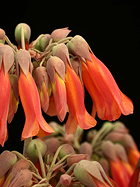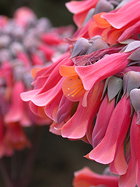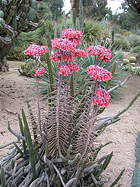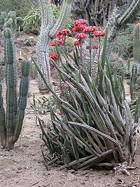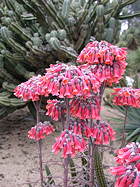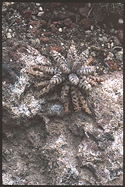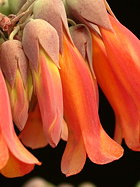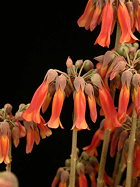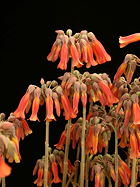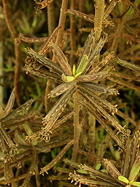This species, better known as K. tubiflora, is widely naturalized throughout the tropics and subtropics. Its prolific formation of small plantlets on the leaf margins is the reason for its success in colonizing new ground. It is also widespread throughout the Huntington’s Desert Garden but usually goes unnoticed by virtue of it cryptic camouflage coloration—until mid-winter when its showy capitate, inflorescences of pendant, orange, tubular flowers emerge, sometimes among completely unrelated plants, requiring a second look to discern just what is growing where. Therefore, this is a useful addition to the plant palette in suitable climates where it adds a serendipitous quality to the landscape, in much the same manner as seasonal bulbs that miraculously spring forth from bare ground.
Most, if not all of the plants of K. delagoensis in cultivation are derived from a single clone, HBG 789, collected by Charles Swingle and Henri Humbert during a USDA-sponsored expedition in 1928. The ease with which replicates are propagated makes this a useful research subject for a variety of scientific studies. The availability of another clone expands the possibilities for comparison of two genetic variants.
The Swingle collection is distinguished by its camouflage pattern of purplish spots on a khaki background. The new collection has more slender leaves that are more uniformly purplish on the upper surface but bisected by a tan midvein. The flowers are a more uniform orange in the earlier collection, while those of the latter are yellowish where shaded by the calyx or where petals overlap in the bud.
Rooted plantlets of HBG 91556, collected by J Lavranos (30041), G Barad, G James, M Kimnach & S Linden, 24 Oct 1995, 15 km from Ihosy on the road to Ivohibe and Farafangana, Madagascar. $8. A plant of the Swingle collection is available for an additional $3.
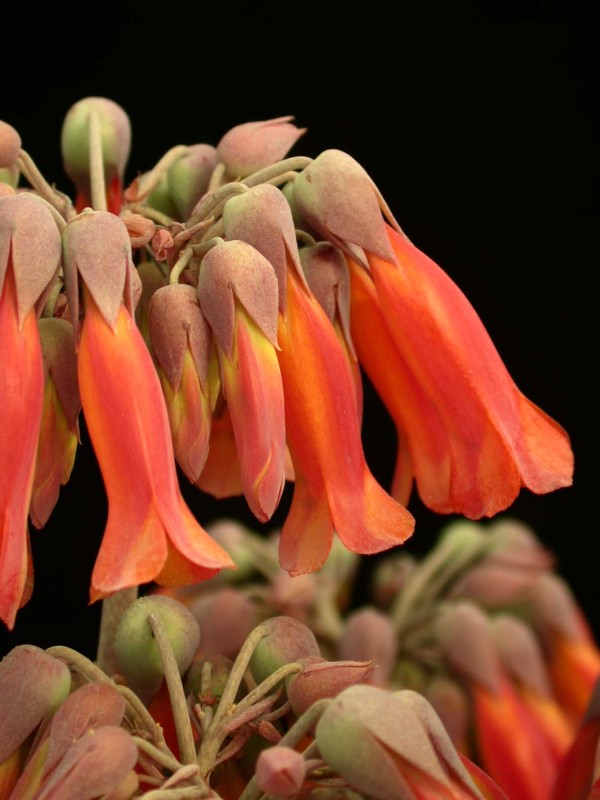
Published in the Cactus and Succulent Journal, Vol. 77 (2), March - April, 2005
